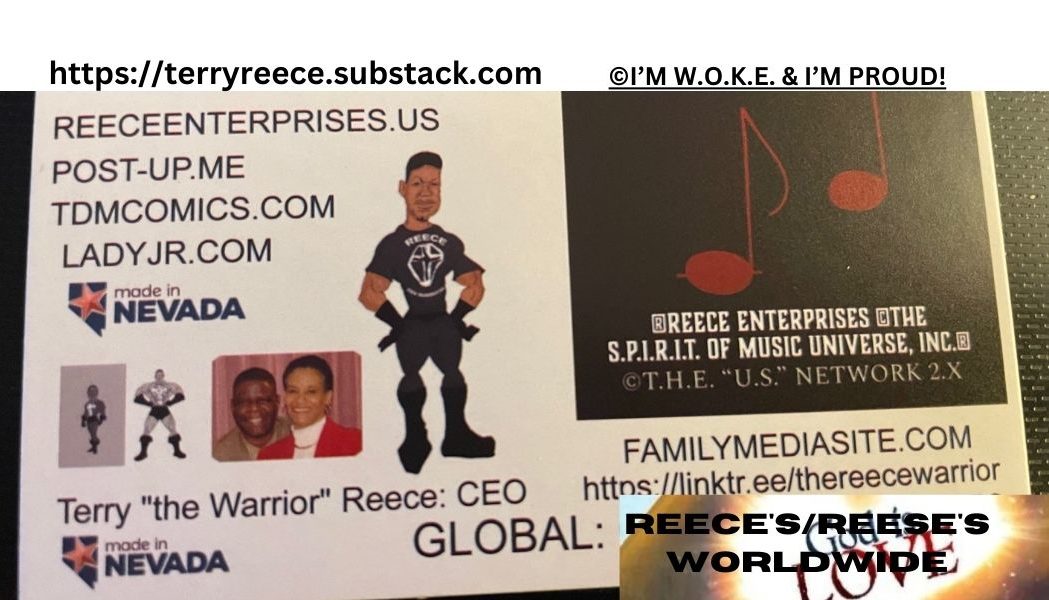https://www.warbridesofjapan.com/
Japanese women who married American military men occupying their country after WWII were called “war brides”…
Besides marrying their former enemies, WWII war brides from Japan had interracial marriages with black, white and Latino servicemen; giving birth to mixed-race children. The rare exceptions were Japanese nationals who married Japanese American Military Intelligence Service officers.
Even though Japanese war brides readily accepted their new English language, Western-style homes and American customs, they still retained pride in their cultural heritage and often taught aspects of it to their hafu children.
https://www.warbridesofjapan.com/screenings
https://www.warbridesofjapan.com/about
War Brides of Japan, A Documemory by Yayoi L. Naito Winfrey -1- TRACK 1: HERSTORY “Degaseki” Lily Anne Yumi Welty-Tamai, PhD 05:56;39 Her dissertation on mixed-race Japanese Americans led Lily to study WWII Japanese war brides. As she discusses the similarity of their journey overseas to a new country with that of the degaseki (migrant worker), she also explains how the brides met their military husbands during the postwar occupation of Japan. And, she expounds on “war brides schools” operated by the American Red Cross in order to westernize the new wives. “Japanese Brides, American Wives” Regina F. Lark, PhD 12:46:40 After reading a book in her sociology class that painted war brides’ lives as bleak and dismal, Regina set out to prove otherwise. First, by writing her dissertation on the subject; then, by accompanying members of the Nikkei International Marriage Society to Japan. There, she interviewed the war brides’ mixed-race adult children and learned how they struggled to assimilate. Regina also provides explicit details about US immigration laws at the time American military men wanted to bring their brides home, while revealing discriminatory practices like the anti-miscegenation statutes that some states maintained until Loving v. Virginia in 1967. War Brides of Japan, A Documemory
by Yayoi L. Naito Winfrey
-2-
TRACK 2: “THE BRIDES”
“The Best Ambassador”
Parker Tinsley, Asako Sakaguchi Miller Kimes and Margaret Kei Miller Tinsley 24:48;09
Speaking Japanese with his grandmother in her Laguna
Hills California residence, Parker helps Asako remember
how she met her white American Marine Honor Guard
husband, and how they quickly married and arrived in
the US.
Later, Asako’s daughter, Margaret, talks about their
family’s world travels and her mother’s role in
entertaining diplomats in countries like Libya where they
once lived—as well as the war’s impact on her mother
and the family members she lost.
Brought up in a cultured family of kimono shop owners, Asako recalls having to learn the formal
Japanese tea ceremony and how to play traditional koto. Besides making matcha (tea), Asako
also shows off the dress she had custom made from her wedding obi (sash). Both mother and
daughter also remember Empress Michiko of Japan’s declaration that, “Japanese war brides
are the best ambassadors for Japan”.
“Kitchens and a Priest”
Myokei (Lynda) Caine-Barrett, Fumiko Kiyahara Caine and Diane Caine Shirey” 25:48;09
In their Elk Grove California home, Fumiko sits on a sofa
between her two daughters and recounts how she met
their African American father. She recalls earlier years in
Japan when she left her eldest child at an orphanage
after being convinced that she’d never survive as the
mother of a half black baby.
The trio talk about the various military bases where they
were stationed and the racism they overcame in each
location.
Fumiko jokingly admits to not being much of a cook—unacceptable for a Japanese woman of
her generation. Today, daughter Myokei is the only ordained Buddhist priest of her sect who is
both a woman and an American.
War Brides of Japan, A Documemory by Yayoi L. Naito Winfrey -3- TRACK 3: “THE KIDS” “The Entertainer’s Daughter” Roleta Fowler Vasquez 10:22;45 Roleta’s Japanese mother hailed from a family of entertainers, and when she married Roleta’s white American civil engineer father, they decided raising their mixed-race daughter in the US would be best—even though it meant leaving behind family members. Roleta’s mother chased the American dream, but her dreams were shattered by the racist attitudes she encountered in Los Angeles; and, she would end up living in Little Tokyo Japantown for the rest of her life. Because of her mother’s work, Roleta is knowledgable about geisha culture, and clarifies what it is and isn’t. “hafu” Joan McClanahan Lairson, Naomi Herrera, Elaine McClanahan and Andy Campbell (Roleta Fowler Vasquez and Joseph P. Vasquez appear briefly) 22:49;06 At Kageru Downtown Tokyo Cuisine & Sake Bar Restaurant in Little Tokyo Japantown Los Angeles, four adult children of Japanese war brides and African American military fathers share a Japanese lunch while discussing their mothers’ lives in Japan; how they grew up and shaped their own unique identities; and, why they admire their mothers for their courage and strength. War Brides of Japan, A Documemory
by Yayoi L. Naito Winfrey
-4-
TRACK 3: “THE KIDS”
(cont.)
“Remembering Her Mother”
Jean H. Lahn 12:19;39
Having recently lost her mother, Jean visibly grieves
while talking about the Japanese woman who strongly
influenced their family of three girls and a boy.
Because her white father was a chauffeur to military
officers, they lived in many exotic locales like Paris,
where Jean was born. When the family finally settled in
San Jose, Jean’s mother became known as “The
Riceball Mom” to her children’s friends as she often
made onigiri (riceball). But Jean and her siblings also
experienced racist teasing from the other school kids.
Jean also reveals how her mother kept a terrible secret
hidden from her family in Japan.
War Brides of Japan, A Documemory by Yayoi L. Naito Winfrey -5- TRACK 4: “THE CULTURE” “Cactus…Cranes…Cooks” M. Fumie Craig, Michelle Naoko Craig and Stephanie Mariko Rojas 20:34;59 In her Arizona desert home, M. Fumie demonstrates origami (art of paper folding) as she reminisces about her late mother who passed her artistic abilities on to her. Later, M. prepares and serves a mostly Japanese dinner followed by breakfast the next day. Along with her older daughter, Michelle, she also makes mochi (rice cake). Both Michelle and her younger sister, Stephanie, fondly remember growing up in a multicultural environment with their white father, black Mexican grandfather and Japanese grandmother—who often prepared their favorite Japanese foods. “Tamales 4 Bon Odori” Diana Portugal and Hannah Martinez 18:30;55 Inside her Central Valley house in Clovis California, Diana recalls how her Japanese mother worked in fruit packing houses while her Mexican American father labored as a farm hand. Instilled with Japanese culture, Diana learned to follow rules yet she was confounded that Japanese Americans didn’t accept her half- Japanese family. Even though they attended the Obon Festival every year, they were not invited to the Buddhist temple next door to rehearse for Bon Odori (Bon dances). Diana also compares the rituals of Obon to Dia de los Muertos, the Mexican “Day of the Dead”. Hannah, Diana’s youngest daughter, talks about living in a predominately Latinx community while having mixed roots and her endeavors at maintaining her Japanese heritage without the input of her late grandmother. War Brides of Japan, A Documemory
by Yayoi L. Naito Winfrey
-6-
TRACK 4: “THE CULTURE”
(cont.)
“Bringing Japan Home”
Sophia Childs 16:00;16
Even though her Sacramento house is brimming with
kokeshi (Japanese dolls), noren (Japanese curtains),
dishes, figurines and sculptures, Sophia can’t stop
bringing home more Japanese items whenever she
visits Japan.
While demonstrating her cooking skills, Sophia
discusses the Japanese delicacies she loves to prepare.
Her identity as a black Japanese person, she says, was
shaped by studying the Japanese language and
traveling often with her mother to her countryside home
in Japan.
Although Sophia’s parents suffered a major loss during
their early years in Japan, they sustained their happy
marriage until her mother passed away.
War Brides of Japan, A Documemory by Yayoi L. Naito Winfrey -7- TRACK 5: “BFF’s; BUDDHIST FRIENDS FOREVER” “Family Fortune” Mihoko Farrison, Theodore Farrison, Castora Hayes, Kim Farrison and Doris Hardison 10:02;45 With their parents recently celebrating 65 years of marriage, this Tacoma Washington family declares how fortunate they feel. Youngest daughter Castora talks about how her parents met and married, and her Japanese mother’s early years spent with her black husband’s family in the south. Older brother Kim remembers eating Japanese meals along with soul food, and oldest daughter Doris reminisces about all the mixed Japanese war bride families she knew while growing up—including the Factory’s whose family appears in “Disowned/ Reclaimed”. “Missing Her Mom” Dottie Putney 11:45;02 Now living in Maple Valley Washington, Dottie talks about her early years as the child of a Japanese war bride and white sailor father. In Japan, she was considered too white, but in California she was considered too Asian. Although she always wanted to attend Japanese school, Dottie took it upon herself to learn the language on her own. Today, having found a balance between the two sides of her heritage, she takes the time to reflect on the tiny but powerful woman, a devout Buddhist, who was her mother and whom she still misses terribly. War Brides of Japan, A Documemory
by Yayoi L. Naito Winfrey
-8-
TRACK 5: “BFF’s; BUDDHIST FRIENDS FOREVER”
(cont.)
“Disowned/Reclaimed”
Doris Factory, William Michael Factory, Jr. and Alana Kynaston 9:29;11
In Tacoma Washington, two siblings—Doris and Mike—
fondly remember their late parents, but are still troubled
that their Japanese mother was disowned by her family
for marrying their African American father.
Meanwhile, Doris’ granddaughter, Alana, recalls how her
great-grandmother always interacted with her even as
she was in great pain due to illness.
Later, Doris gives a brief history of how Nichiren
Buddhism found its way to the US due to the efforts of
Japanese war brides. That shared religious belief drove
her mother to forge a lifelong friendship with Mihoko
Farrison featured in “Family Fortune”.
*All family photos appearing in this document are protected under international copyright laws
and those rights remain with each individual family—with the exception of being licensed for use
in the film, War Brides of Japan.





